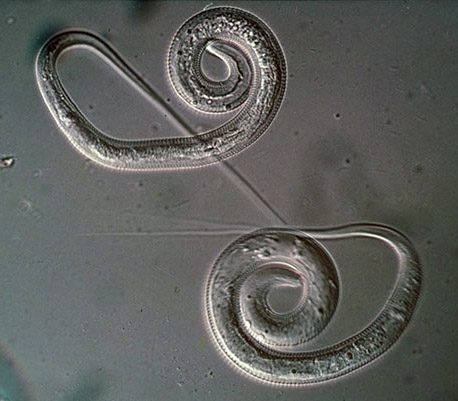2.2.3 Water-based diseases
Water-based diseases are caused by parasites that spend part of their life cycle in water. Water-based diseases such as bilharzia (also known as schistosomiasis – this will be described in Section 2.3.3), and dracunculiasis are caused by helminths. Dracunculiasis, or Guinea worm disease, is transmitted by drinking water that is contaminated with copepods that contain the larvae of the Guinea worm (Figure 2.2). Copepods are very small crustaceans, sometimes known as water fleas, that are found in the sea and in fresh water. The Guinea worm larvae get into the water by emerging through the skin of an infected person while they are washing or bathing. To prevent dracunculiasis infection, effective water treatment is needed. A global campaign to eradicate Guinea worm has made great progress in reducing the incidence of the disease and it is now found in only a few countries in the world. Ethiopia is one of them, but the disease is now rare; only three cases were reported during 2014 (WHO, 2015). (Note that transmission of dracunculiasis requires drinking of contaminated water and it can, therefore, be classified as both a waterborne and a water-based disease.)

2.2.2 Water-washed diseases
